
Automatic Valve Controller
The INTELLITROL series of automatic valve controllers provide total control of vacuum operations. It offers fully automatic, protected manual mode and service mode for complete manual operation. Learn More.
YTI Thin Film Products and Services
Phone: 860.429.1908
www.ytionline.com
|
 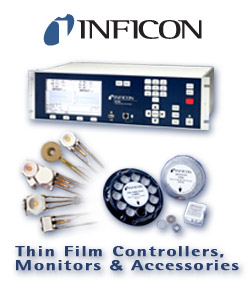
INFICON thin film deposition controllers, monitors and accessories, including customizable sensors and feedthroughs, offer features, function and value targeted to your application. View our catalog and contact us today! |

Rebuilt Feedthroughs
Rigaku rebuilds ferrofluid feedthroughs for all leading manufacturers and offers a warranty on rebuilt units. Most parts are stocked in inventory for fast turnaround. Learn More.
Rigaku Vacuum Products
E-mail: vacuum-info@rigaku.com
Phone: 603-890-6001
|

Comdel's CV Series Delivers Stable Power for VHF Applications
Comdel's CV series offers stable power at frequencies from 30 to 80 MHz. Ideal for use in VHF plasma systems, solar/photovoltaics, CW and pulsed laser systems. Learn more.
|

From AR Coatings to Notch Filters, and from TCOs to DBRs, Evatec offers customized coating platforms and complete process solutions based on enhanced evaporation and sputter.
Phone: (603) 669-9656
www.evatecnet.com
E-Mail:infoNA@evatecnet.com
|

64 CFM List $8,250
3 to 64 CFM, 6 to 108 m3/hour. All voltages, 1 and 3 phase. Fomblim/Krytox available. 2 year parts & labor warranty, satisfaction guaranteed.Prices and Complete Specs at:
|

Fil-Tech's Quality Crystals® Gold, Longer Life Gold, and Alloy 6MHz and 5MHz styles. Fil-Tech supplies rate monitors, sensorheads, feedthroughs, ebeam and ion source parts. Fil-Tech's FT704 replaces DC704. Call for catalog and Technical Bulletins.
Fil-Tech, Inc. 617-227-1133 or 800-743-1743 www.filtech.com |
 
THREE STEPS TO SUCCESS
Power Mag Technologies now offers 3 different power levels of DC Magnetrons to enhance your sputtering process with the Maxim line of power supplies.
Contact: 877.513.3295
|
 
Thin-Films Research is prepared to meet your custom thin-film coating requirements. Using state-of-the-art equipment and over 40 years of experience, Thin-Films Research offers technology for the electro-optics, semiconductors, sensors & medical electronic industries. Learn More
Thin-Films Research, Inc.
270 Littleton Road
Westford, MA 01886
Phone: 978-692-9530
Fax: 978-692-9531
E-Mail: sales@thinfilmsresearch.com |
 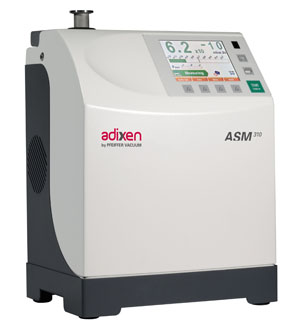
Compact, Dry Leak Detector - $23,250 Save over $6000 on the 46 pound ASM 310 multipurpose, helium leak detector. For $23,250 you get the ASM 310 detector, sniffer probe, helium spray gun and cart. Learn More.
Pfeiffer Vacuum, Inc.
Phone: 781-331-4200
Web site: www.pfeiffer-vacuum.com
contact@pfeiffer-vacuum.com
|
 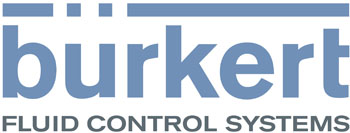
Smart solutions for surface technology from Bürkert - perfect for optimal process yields, high quality and peace of mind.
Bürkert. We make ideas flow.
Bürkert Werke GmbH
Maik Lösel
Segment Manager Gas Handling
Christian-Bürkert-Str. 13-17
74653 Ingelfingen, Germany
Phone: +49 35952 36 362
Email: maik.loesel@burkert.com
|
 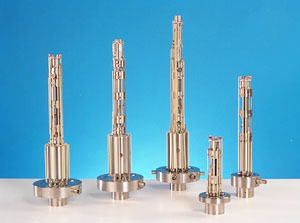
Hiden RGA Series
Residual Gas Analysers for Vacuum Diagnostics and Vacuum Process Analysis
E-mail address: info@hiden.co.uk
Phone: +44 [0] 1925 445225 (UK)
or [1] 734 542 6666 (USA)
Website: www.HidenAnalytical.com
|

Temescal Systems & Components
Industry leaders choose Temescal for our unparalleled expertise in electron beam coating system and component solutions. Embrace the cloud.
Learn more.
http://www.temescal.net
(800) 522-1215
email: temescalinfo@ferrotec.com
|
 One-week Course One-week Course in the Practical Design and Production of Optical Thin Films June 3-7, 2013
Charleviox, MI USA
(Also tentatively again
in Sept/Oct in the UK)
Comprehensive and Comprehensible!
|


USB-Powered Reflectometer for Thin-Film Measurement
Quickly measure thickness and index of single- and multi-layer films using aRTie, which simultaneously measures reflectance and transmittance.
Learn more.
Filmetrics, Inc.
Phone: 858-573-9300
www.filmetrics.com
info@filmetrics.com
|


High Speed Compact Ellipsometer
The ULVAC UNECS Spectroscopic Ellipsometer measures thin film thickness and optical constants faster (20 ms/point) and more efficiently than conventional mechanically controlled rotating optical devices. Learn More.
|

Ferrofluidic Seals
Ferrotec's Ferrofluidic® vacuum feedthroughs set the standard for precision sealing in rotary motion applications. Available in standard sizes or customized for your requirements. Learn more.
http://seals.ferrotec.com
(800) 258-1788
email: info@ferrotec.com
|

Providence, Rhode Island
50 miles south of Boston, MA
Technical Program - April 22-25
|

NEW!
SVC Vacuum Coating Resource Guide
in partnership with Multiview
The on-line Vacuum Coating Resource Guide replaces the Product and Services Locators on the SVC Web Site. This innovative, dynamic resource provides users current information for product and service providers in our technology.
Is your company listed in the
Vacuum Coating Resource Guide?
Contact Multiview to enhance your listing in the Guide or to purchase high-profile advertising space. in the Guide or to purchase high-profile advertising space. |
|
|
|
Products Finishing Magazine Partners with SVC to Highlight Vacuum Coating and PVD
|
From Products Finishing Magazine, February 2013: Products Finishing magazine features a multi-page overview of vacuum coating technology and its role in the coatings industry in partnership with the Society of Vacuum Coaters. The articles in this special feature include:
Bringing You the Future of Coatings with PVD, by Todd Luciano, Publisher from Products Finishing Magazine Read the article...
Why Vacuum Coating? by Vivienne Harwood Mattox, Executive Director from the Society of Vacuum Coaters Read the article...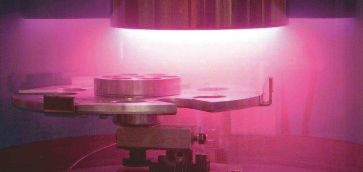 Vacuum Deposition Coating Options for Finishers, by Carl Lampert, Society of Vacuum Coaters Technical Director Read the article... Vacuum Deposition Coating Options for Finishers, by Carl Lampert, Society of Vacuum Coaters Technical Director Read the article...
Getting Physical with Plastics, by Gary Vergason and Mark Fitch from Vergason Technology, Inc. Source: Read the full articles by clicking the links above... Products Finishing Magazine, February 2013 Issue: Image: Products Finishing Magazine
|
|
Space Provides New Frontier for HIPIMS Research
|
From Sheffield Hallam University, February 19, 2013: "Space satellites will be launched on a mission to observe worlds beyond the known solar system thanks to revolutionary new plasma developed in the labs at Sheffield Hallam University. Experts have developed a new coating for space satellite cryocoolers - the specialist devices that regulate their temperature and enable them to function in space. 
The University has been working with the Space Science Technology Department of Rutherford Appleton Laboratory (RAL) after finding that the component coatings created by the University team are better at maintaining the optimum temperature of satellite systems on missions to observe the solar system and beyond. And they are now set to be used in a space observatory to help characterise the physics and chemistry of planetary atmospheres beyond the known solar system. It means the University can help support the £9.1bn space industry, currently experiencing an annual growth rate of 7.5 per cent."
Source: Read the full article...
|
|
Low-Reflectance, Durable Coatings for Infrared Lenses
|
From SPIE Newsroom, January 21, 2013, by Mordechai Gilo: "Thermal imaging systems are used in many night vision applications, from fire-fighting and commercial safety driving to the modern battlefield. Due to conditions in the field, silicon and germanium lenses need to withstand acids, salt water and salt spray, wear and severe environmental changes, while preserving high transmittance over a wide spectral range. 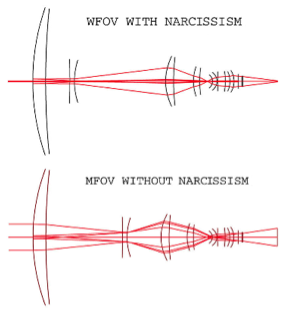
In IR cameras, the effect of a detector's reflection on the detector itself (the Narcissus effect) is a major source of noise. This reflection is usually related to the front surface of the lens assembly and is greater if the detector is cooled. In a fixed-focal-length assembly, the surface can be designed to eliminate this effect, but in a zoom-lens assembly, the effect is hard to eliminate. A frequent coating for durability is hard carbon, also known as diamond-like carbon (DLC)."
Source: Read the full article...
Image: Ophir Optronics, Ltd.
|
2013 SVC TechCon Promotional Partners
|
The following publications and organizations are playing an important role promoting the 2013 SVC TechCon within and outside the vacuum coating community. 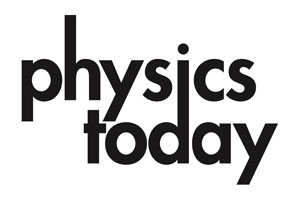
Tomorrow's vacuum and solar innovations start with the researchers who read Physics Today. 52% of our 120,000 readers list their primary job function as research. The subset of readers who buy vacuum systems and components is 29,403. We look forward to sponsoring SVC's Exhibitor Lounge again in 2013.
See all the 2013 SVC TechCon Promotional Partners Here. If you are Interested in promoting the SVC 2013 TechCon to your readers or members, contact publications@svc.org for details on becoming a Promotional Partner. |
|
Mechanism Behind Wear at the Atomic Scale
|
From University of Pennsylvania, January 29, 2013, by Evan Lerner:
"Researchers at the University of Pennsylvania's School of Engineering and Applied Science have experimentally demonstrated one of the mechanisms behind wear at the smallest scale: the transfer of material, atom by atom, from one surface to another.
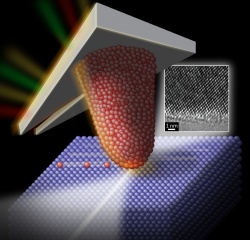 At the nanoscale, wear is a very significant problem. On the nanoscale, wear is mainly understood through two processes, fracture and plastic deformation. These mechanisms typically affect thousands or millions of atoms at a time, whereas nanoscale wear often proceeds through a much more gradual process. Determining the mechanisms behind this more gradual process is key to improving such devices. One wear mechanism that had been hypothesized for the nanoscale is a process known as atomic attrition. There, atoms from one surface are transferred to the other surface via a series of individual bond-forming and bond-breaking chemical reactions. The Penn team's breakthrough was to conduct AFM-style wear experiments inside of a TEM, which passes a beam of electrons through a sample (in this case, the nanoscale tip) to generate an image of the sample, magnified more than 100,000 times. It enabled the researchers to see the atomic structure of the wearing tip well enough to rule out fracture and plastic deformation as the mechanism behind the tip's wear. Proving that the silicon atoms from the tip were bonding to the diamond and then staying behind involved combining the visual and force data into a mathematical test. At the nanoscale, wear is a very significant problem. On the nanoscale, wear is mainly understood through two processes, fracture and plastic deformation. These mechanisms typically affect thousands or millions of atoms at a time, whereas nanoscale wear often proceeds through a much more gradual process. Determining the mechanisms behind this more gradual process is key to improving such devices. One wear mechanism that had been hypothesized for the nanoscale is a process known as atomic attrition. There, atoms from one surface are transferred to the other surface via a series of individual bond-forming and bond-breaking chemical reactions. The Penn team's breakthrough was to conduct AFM-style wear experiments inside of a TEM, which passes a beam of electrons through a sample (in this case, the nanoscale tip) to generate an image of the sample, magnified more than 100,000 times. It enabled the researchers to see the atomic structure of the wearing tip well enough to rule out fracture and plastic deformation as the mechanism behind the tip's wear. Proving that the silicon atoms from the tip were bonding to the diamond and then staying behind involved combining the visual and force data into a mathematical test."
Source: Read the full article...
Penn News: http://www.upenn.edu/pennnews/news/penn-research-show-mechanism-behind-wear-atomic-scale
Image: Felice Macera
|
|
Black Silicon Can Take Efficiency of Solar Cells to New Levels
|
From Aalto University (Finland), January 17, 2013: "Scientists at Aalto University have demonstrated results that show a huge improvement in the light absorption and the surface passivation of silicon nanostructures. This has been achieved by applying atomic layer coating. The results advance the development of devices that require high sensitivity light response such as high efficiency solar cells. - This method provides extremely good surface passivation. Simultaneously, it reduces the reflectance further at all wavelengths.These results are very promising considering the use of black silicon (b-Si) surfaces on solar cells to increase the efficiency to completely new levels."Source: Read the full article...
|
|
Using Nanoparticles to Treat Heat Like Light
|
From Massachusetts Institute of Technology (MIT) News,
January 11, 2013, by David L. Chandler: "An MIT researcher has developed a technique that provides a new way of manipulating heat, allowing it to be controlled much as light waves can be manipulated by lenses and mirrors.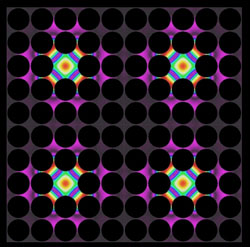
The approach relies on engineered materials consisting of nanostructured semiconductor alloy crystals. Heat is a vibration of matter - technically, a vibration of the atomic lattice of a material - just as sound is. Such vibrations can also be thought of as a stream of phonons - a kind of "virtual particle" that is analogous to the photons that carry light. The new approach is similar to recently developed photonic crystals that can control the passage of light, and phononic crystals that can do the same for sound."
Source: Read the full article...
|
|
PV Equipment Spending Downturn to Reset Preferred Supplier Lists
|
From Solarbuzz, January 17, 2013: "PV equipment spending (including c-Si ingot-to-module and thin-film fabs) is forecast to decline to an eight-year low in 2013, as the industry reacts to the dearth of new purchase orders and de-bookings of the past 12 months. PV equipment spending for 2013 is likely to be at the $2 billion level, a huge reduction from the $12-13 billion revenue opportunity last seen in the peak year 2011. Equipment spending is not the same as tool shipment in the PV industry. Equipment spending is revenue recognition, the only parameter that renders a tool shipment as 'real'."
Source: Read the full article...
|
Chemistry Resolves Toxic Concerns about Carbon Nanotubes
|
From University College London (United Kingdom), January 15, 2013: "Safety fears about carbon nanotubes, due to their structural similarity to asbestos, have been alleviated following research showing that reducing their length removes their toxic properties.
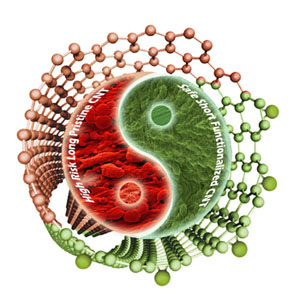
In a new study, published in the journal Angewandte Chemie, evidence is provided that the asbestos-like reactivity and pathogenicity reported for long, pristine nanotubes can be completely alleviated if their surface is modified and their effective length is reduced as a result of chemical treatment.
In this paper, the authors describe two different reactions which ask if any chemical modification can render the nanotubes non-toxic. They conclude that not all chemical treatments alleviate the toxicity risks associated with the material. Only those reactions that are able to render carbon nanotubes short and stably suspended in biological fluids without aggregation are able to result in safe, risk-free material." Source: University College London: http://www.ucl.ac.uk/news/news-articles/0113/130115-chemistry-resolves-toxic-concerns-about-carbon-nanotubes Image: University College London
|
|
Beneq Delivers World's First Scaled-Up Roll-to-Roll ALD System to ASTRaL
|
From Beneq (Finland), February 1, 2013: "Beneq announces a breakthrough in its roll-to-roll (R2R) atomic layer deposition (ALD) technology with the delivery of its first industrial-scale system to the Advanced Surface Technology Research Laboratory (ASTRaL), a research unit based in Mikkeli, Finland, that belongs to the Lappeenranta University of Technology. The R2R system allows the development of rapidly growing new applications that were not able to take advantage of ALD coating until now. Beneq has successfully scaled up its proprietary continuous ALD process to a 500 mm wide web using the R2R manufacturing method. Testing of the pilot WCS 500 system was completed in December 2012, and the system is currently being delivered to ASTRaL. The system is the promising outcome of a longer term partnership between ASTRaL and Beneq."
|
|
Patent Analysis: Flexible Roll-to-Roll Processing
|
From Solid State Technology, February 5, 2013:
"A new report from IHS Displaybank examined a total of 483 patents on roll-to-roll processing technologies, focusing on 32 that were flexible, OLED-related. 43 flexible OLED-related roll-to-roll application technologies and 23 roll-to-roll patents by SiPix were also selected for an analysis. Looking at the application trend of 483 patents on roll-to-roll processing technology, the number of applications has continuously increased since mid -2000s."
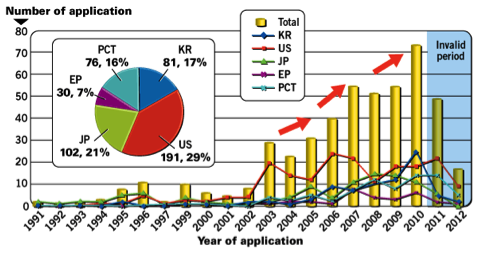
Source: Read the full article...
|
UK's World Leading Graphene Institute
| From University of Manchester (United Kingdom), January 14, 2013: "This is the first glimpse of the new $93 million research institute into wonder material graphene, which is to be built at The University of Manchester. The National Graphene Institute (NGI) will be the UK's home of research into the world's thinnest, strongest and most conductive material, providing the opportunity for researchers and industry to work together on a huge variety of potential applications. The 7,600 square meter building will house state-of-the-art facilities, including two cleanrooms - one which will take up the whole of the lower ground floor - where scientists can carry out experiments and research without contamination.
 Funding for the NGI will come from $58 million from the Government, as part of US$ 68m allocated for graphene research, and the University has applied for US$35m from the European Research and Development Fund (ERDF). The NGI will operate as a 'hub and spoke' model, working with other UK institutions involved in graphene research. Some of the world's leading companies are also expected to sign up to work at the NGI." Funding for the NGI will come from $58 million from the Government, as part of US$ 68m allocated for graphene research, and the University has applied for US$35m from the European Research and Development Fund (ERDF). The NGI will operate as a 'hub and spoke' model, working with other UK institutions involved in graphene research. Some of the world's leading companies are also expected to sign up to work at the NGI."
Source: Read the full article...
|
|
OSHA Fact Sheet: Working Safely with Nanomaterials
| | From OSHA, U.S. Department of Labor, January 2013:
"Workers who use nanotechnology in research or production processes may be exposed to nanomaterials through inhalation, skin contact, or ingestion. This OSHA fact sheet provides basic information to workers and employers on the most current understanding of potential hazards associated with this rapidly-developing technology and highlights measures to control exposer to nanomaterials in the workplace."
Topics include:
- current occupational exposure limits
- assessing worker exposure
- methods to reduce worker exposure
- OSHA standards that may apply to nanomaterial hazards
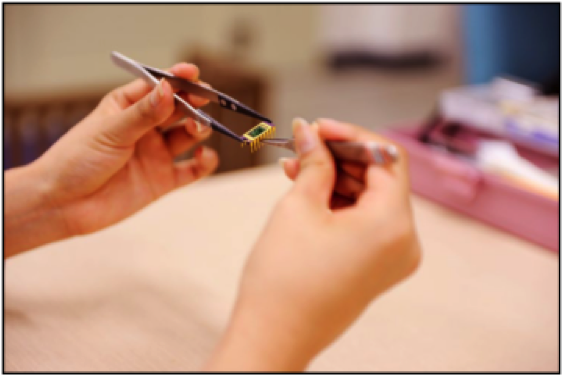
Source: Read the full article...
|
|
New Type of LED Producing Wide Spectrum Light at Low Cost
| | From Texas A&M University, January 31, 2013, by Shawn Eyre: "
Dr. Yue Kuo, the Dow Chemical Professor in the Artie McFerrin Department of Chemical Engineering at Texas A&M University, has fabricated a new type of LED capable of producing a wide spectrum light while operating for long periods of time at atmospheric conditions. The device is based on a new concept of light emission from an ultra-thin amorphous dielectric layer.
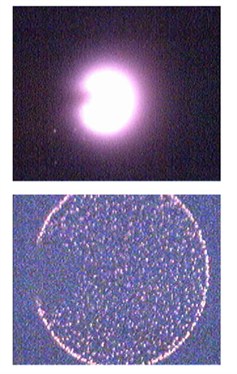 An article published in Applied Physics Letters describes the light emission mechanism, characteristics of the emission spectrum, fabrication method, and the operation parameter effects on this type of LED. The device was fabricated with the room-temperature sputter deposition method on a silicon wafer. The light emission intensity could be enhanced with a nanocrystal layer embedded in the dielectric film. Most importantly, the complete process and materials are compatible with the existing IC fabrication facility. There is a need for a new type of LED that is low cost, long operation life, small in size, emits white light, and easy to fabricate with environmentally friendly materials and process." An article published in Applied Physics Letters describes the light emission mechanism, characteristics of the emission spectrum, fabrication method, and the operation parameter effects on this type of LED. The device was fabricated with the room-temperature sputter deposition method on a silicon wafer. The light emission intensity could be enhanced with a nanocrystal layer embedded in the dielectric film. Most importantly, the complete process and materials are compatible with the existing IC fabrication facility. There is a need for a new type of LED that is low cost, long operation life, small in size, emits white light, and easy to fabricate with environmentally friendly materials and process."
Source: Read the full article...
|
|
Do You Have an Interesting Article to Share?
|
Interested in sharing the latest news in vacuum coating technology? Forward us a link to an article you want to share with the rest of the SVC readership to publications@svc.org. Purchase advertising space in this newsletter by contacting SVC at  svcinfo@svc.org. svcinfo@svc.org.
Society of Vacuum Coaters
71 Pinon Hill Place NE
Albuquerque, New Mexico 87122
505-856-7188
|
|
|
|
|